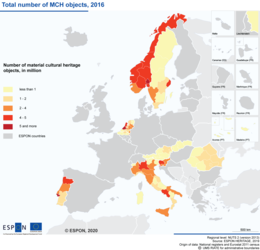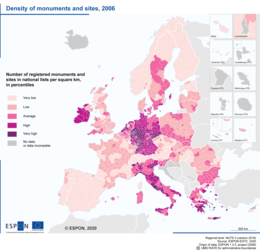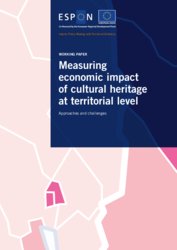Working paper "Measuring economic impact of cultural heritage at territorial level"
During the European Year of Cultural Heritage 2018, over 23 000 events were organised, reaching more than 12.8 million participants (1). This clearly shows the potential impact that cultural heritage can have on economic development and people’s quality of life.
The landmark study “Cultural Heritage Counts for Europe” (2015) (2) shows that an estimated 300 000 people work directly in the cultural heritage sector in the European Union (EU) and as many as 7.8 million jobs are created indirectly by the sector. However, there is still a limited understanding of what economic benefits cultural heritage brings to regions and cities.
This working paper is guided by the following questions:
• How can the economic impact of cultural heritage be defined? To which economic sectors does cultural heritage contribute? How significant is this contribution?
• How can economic impact of cultural heritage be measured? How can this be expressed in quantitative terms considering reliability and validity, at the territorial level?
• How can the results on the impact of cultural heritage across territories be compared?
This working paper is mostly based on the results and evidence from the ESPON 2020 Targeted Analysis project “Material Cultural Heritage as a Strategic Territorial Development Resource: Mapping Impacts through a Set of Common European Socio-economic Indicators” (ESPON HERITAGE) and the ESPON 2006 project “The Role and Spatial Effects of Cultural Heritage and Identity”...






